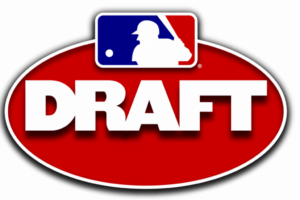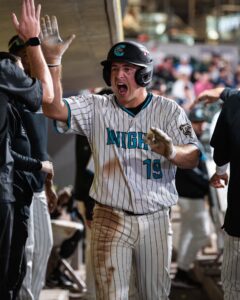White Sox Rookie Watch: March/April
With the White Sox fielding a number of rookies to start the 2014 season, I thought it would be fun to track them all throughout the year. I will be breaking down their performances statistically, trying to identify trends, areas of weakness and strength, signs of progression and regression etc. I will be giving my thoughts about what we can expect over the remainder of the season from these rookies, as well as giving some career projections and future role expectations. I will also be ranking each rookie by WAR in the battle for White Sox 2014 ROY.
1. Jose Abreu:
2014- 128 PA, .270/.336/.617, .348 ISO, 7.0 BB%, 21.9 K%, 1.0 WAR
Abreu has been an absolute revelation, displaying truly monstrous power, setting rookie records with 10 home runs and 32 RBI in the month of April and he also has 3 multi-homer games. He’s second MLB in overall power with a .348 ISO, behind only Troy Tulowitzki’s .364 mark. He will need to keep the strikeouts in check moving forward, as his K% has steadily risen from a 10.6% mark through his first 10 games to it’s current level of 21.9%, and he’s on pace to strikeout around 160 times at his current rate. His 7.0 BB% is solid, but to be considered an elite all-around offensive player, you’d probably like to see him get the BB% around 10% or above, though that’s only a minor gripe at this stage. Defensively I think he’s looked surprisingly good, with significantly more range and athleticism than Paul Konerko ever had, though he has made some silly errors, and needs to continue working on picking the ball.

2. Erik Johnson:
2014- 23.2 IP, 6.46 ERA, 4.23 FIP, 5.07 xFIP, 6.85 K/9, 5.70 BB/9, 0.3 WAR
There have been some big concerns from Johnson so far in ’14. Firstly, he has lost around 2 mph on his fastball from last September, and secondly, his control has been awful, with 15 BB in 23.2 IP. The strikeout rate has been solid for Johnson’s profile, and his K/9 of 6.85 is an improvement from his 5.86 K/9 with Chicago last year. Demoted to Triple-A after his last start, if Johnson can regain his control, he should still be a viable option for the Sox going forward, but expectations are certainly lower than they were a month ago.
3. Marcus Semien:
2014- 130 PA, .225/.285/.367, .142 ISO, 7.7 BB%, 29.2 K%, 0.2 WAR
Semien has made a mixed start to his Sox career. He’s looked solid at times, with a decent idea of what he’s doing at the plate, but he’s striking out a lot with a 29.3 K% and he’s on pace for over 200 strikeouts. He’s a selective hitter, with a lower than average Swing% (both O-Swing% and Z-Swing%). I think he may be too selective at times, and he takes a lot of called strikes. This has resulted in him often falling behind in the count and then having to over-compensate, resulting in a lot of K’s. I hope the Sox give him time to adjust as I think he will hit. Both ZIPS and Steamer have encouraging projections for his K% going forward, with 22.2 and 20.3 K%’s respectively. He has displayed plus power for a middle infielder with a .142 ISO. Some have suggested that Semien needs more time in Triple-A, but surely the best way for him to adjust to Major League pitching is by facing Major League pitchers, and it’s not like he’s been completely over-matched at this level.
4. Zach Putnam:
2014- 10.0 IP, 1.80 ERA, 2.43 FIP, 3.46 xFIP, 7.2 K/9, 2.7 BB/9, 0.2 WAR
The sample size is small, but Putnam has looked good in his 5 appearances this year. His 3.46 xFIP is third best among White Sox pitchers, behind only Chris Sale (3.02) and Jose Quintana (3.32). He has a pretty strong Minor League track record, and in 22.2 career MLB innings he has an excellent 8.34 K/9, 1.59 BB/9 and 3.18 xFIP. His main weapon is a splitter, which has proved very effective in his short career to date according to FanGraphs’ Pitch Type Linear Weights. It’s far too early to say with any confidence, but he could be a viable (and surprise) bullpen option for the Sox, with his ability to mix good K/BB numbers and strong GB%. I like him a lot.
5. Scott Carroll:
2014- 7.1 IP, 1.23 ERA, 3.49 FIP, 4.20 xFIP, 3.68 K/9, 2.45 BB/9, 0.1 WAR
Expectations for Carroll in his MLB debut were low as he’s never been a top prospect or that highly thought of, and he was making his debut as a 29 year old, but the result was quite impressive. He’s definitely not a strikeout artist, but his ability to induce ground balls is a great way to counterbalance the lack of K’s. Getting 3 double plays, as was the case in his debut, helps a lot also. I wouldn’t expect too many starts like this from him going forward, but at the very least, this was a nice debut and a great story.
6. Daniel Webb:
2014- 15.2 IP, 2.87 ERA, 4.22 FIP, 4.37 xFIP, 7.47 K/9, 5.17 BB/9, 0.1 WAR
For me, Daniel Webb has looked the most competent pitcher in the Sox bullpen so far this year. Some of his core results have not been great, with 9 BB in 15.2 IP, but I have confidence in him going forward. He’s got great velocity on the fastball, averaging around 95 mph, and combines it with a nasty slider. The strikeout rate should rise, possibly up to the point where he’s striking out a batter per inning. Hopefully the control improves too, but that has never been his strength, and it may prevent him from ever being a true closer candidate.
7. Jake Petricka:
2014- 16.2 IP, 2.16 ERA, 3.97 FIP, 3.50 xFIP, 7.02 K/9, 4.86 BB/9, 0.1 WAR
Petricka has been a useful contributor out of the Sox ‘pen here in 2014, though like Webb, his core results are not great, with 9 BB in 16.2 IP. He doesn’t have the same velocity or quality of breaking ball that Webb possesses, but he should still see his K/9 increase more in line with what he put up in the Minors last year. His control has never been good, and this year has been no exception, and this likely limits his upside to that of a middle reliever.
8. Maikel Cleto:
2014- 9.1 IP, 2.89 ERA, 5.06 FIP, 7.12 xFIP, 5.79 K/9, 9.64 BB/9, 0.0 WAR
Cleto has displayed his electric fastball, which currently ranks 2nd among all MLB pitchers in average velocity by Baseball Info Solutions (97.2 mph) and 3rd by PITCHf/x (97.1 mph). His control has been awful with a 9.64 BB/9, and his strikeout rate is curiously low for someone with his velocity, at 5.79 K/9. His ERA may look good at 2.89, but his 5.06 FIP, 7.12 xFIP and 6.78 SIERA indicate he is not going to be a reliable option going forward.
9. Leury Garcia:
2014- 30 PS, .269/.321/.385, .115 ISO, 6.7 BB%, 30.0 K%, 0.0 WAR
Garcia is not much of a hitter, with his current .269 AVG being supported by an unsustainable .412 BABIP, and he has problems with the strikeout (30.0 K%). What he does offer is good speed, base running and defensive versatility, with the ability to play several infield positions. He can be a decent bench option going forward, but that probably is his absolute upside.
10. Charlie Leesman:
2014- 2.2 IP, 20.25 ERA, 9.04 FIP, 7.17 xFIP, 0.0 K/9, 3.38 BB/9, -0.1 WAR
Leesman has been in the system for a long time now without ever really impressing. He’s shown good control at times, but also poor control at times and he’s never been much of a strikeout pitcher. He only lasted 2.2 IP in his season debut, predictably getting hit around for 9 H and 6 ER, issuing 1 BB with 0 K. There isn’t a lot to be optimistic about here.
11. Adrian Nieto:
2014- 22 PA, .190/.190/.238, .048 ISO, 0.0 BB%, 40.9 K%, -0.2 WAR
Nieto has, as expected, struggled mightily in his limited PA’s so far this year. That was always going to be the case for a guy making the jump from A+ to MLB. He’s not walking, not making contact and not hitting for power. Small sample size, but we probably should not expect anything from him over the remainder of the season.






